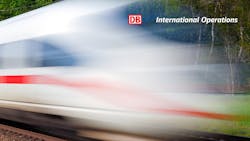In an era where convenience of travel is paramount, designing rail networks and operations to ensure reliable, fast and highly frequent connections is key. This article explores a case study from Germany, where Europe’s largest railway network operator Deutsche Bahn (DB) is transforming long-distance transport with innovative infrastructure configuration and a sophisticated timetabling concept that integrates regional with high-speed rail services, thus creating a highly attractive passenger service. A more efficient and attractive rail service offering is a crucial contributor to achieving sustainability goals, making the management of the modal shift a key objective for governments and infrastructure providers worldwide.
Express, high frequency and regional rail offering combined: The Berlin-Munich corridor
After the country’s reunification, Germany faced the challenge of renewing its dated rail network. In response, Germany launched an infrastructure initiative, with the largest and most complex project being “Project German Unity 8”, an investment of 10 billion EUR. This project aimed to provide a faster connection between Berlin and Munich, a distance of approximately 600 kilometers.
To ensure the optimal configuration of the infrastructure upgrade, an extensive analysis of the current regional services, the existing infrastructure, as well as the demand of both passenger and freight services was conducted.
Based on these considerations, it was decided to choose a route that is not the most direct on the map, but runs through the city of Erfurt. This approach enabled several cities to be connected to the express line, serving a larger, rural population and optimizing the infrastructure for regional and freight services.
Part of this optimization was DB’s approach to timetable integration. It was decided that Erfurt would become a hub for long-distance trains on different axes to intersect, and to thereby offer passengers an even bigger choice of connections. For example, the north-south route of Berlin-Munich goes through Erfurt as well as the east-west route of Erfurt-Frankfurt. Regional train schedules were designed in a way to offer long-distance passengers the best available connectivity to the regional trains, arriving within a 15-20 minute window of the long-distance arrivals and departures. This maximises the catchment area of passengers and provides them with an optimized scope of connections.
Deutsche Bahn (DB) was responsible for the Design-Build-Finance-Operation-Maintain (DBFOM) of the project. With over 4,500 employees and 400 operations experts, DB aimed to address potential operational disruptions during construction and align the new infrastructure with strategic plans, such as promoting more sustainable ways of travelling within Germany and a general upgrade of infrastructure in the country. DB utilized a suite of powerful timetabling, resource, and simulation planning software to optimize schedules. Additionally, passenger movements within stations were modelled to identify bottlenecks and improve the flow of movements.
Interoperability and long-term high operational performance were two further factors in the planning and execution of the “Project Germany Unity 8”. Combining and connecting high-speed with high-frequency regional commuter and freight services allow the maximization of infrastructure use.
These efforts paid off. Despite the longer route, the rail connection from Berlin to Munich became so fast that it matches the flight for speed on the same route, getting passengers from Munich to Berlin in under four hours[1] – straight from city center to city center. Connection times between many German cities were reduced by 45%, and additional capacity was created for regional and freight rail. With 46%, the train has become the preferred mode of transport on the Berlin-Munich route, compared to 23% before 2017, when the line was completed.
Conclusion
The case study of the fully electrified Berlin-Munich high-speed rail line demonstrates how innovative infrastructure projects can transform long-distance transportation. By prioritizing connectivity, Deutsche Bahn successfully reduced travel times and enhanced the passenger convenience, making rail travel the leading mode of transportation on the Berlin-Munich route and driving the modal shift forward significantly.
This project highlights the potential for express rail to meet the demands of modern transportation networks, offering valuable lessons for future rail infrastructure developments. As countries around the world strive to balance growing transportation needs with environmental concerns, the experience of Deutsche Bahn in such projects provides a compelling model for achieving these goals.

